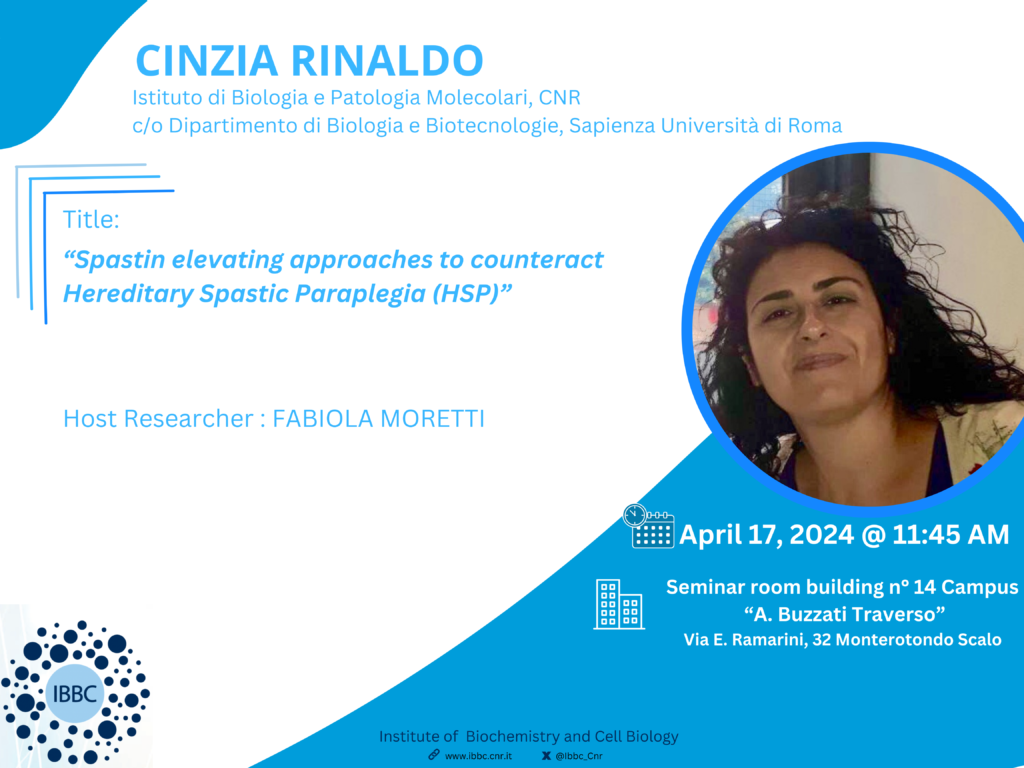External Seminars
17 Apr
11:45
Spastin elevating approaches to counteract Hereditary Spastic Paraplegia (HSP)
Monterotondo
Campus “A. Buzzati Traverso” – Via E. Ramarini, 32 Monterotondo Scalo
------------------------------------------
- Speaker: Cinzia Rinaldo
- Title: Spastin elevating approaches to counteract Hereditary Spastic Paraplegia (HSP)
- Researcher Host: Fabiola Moretti


